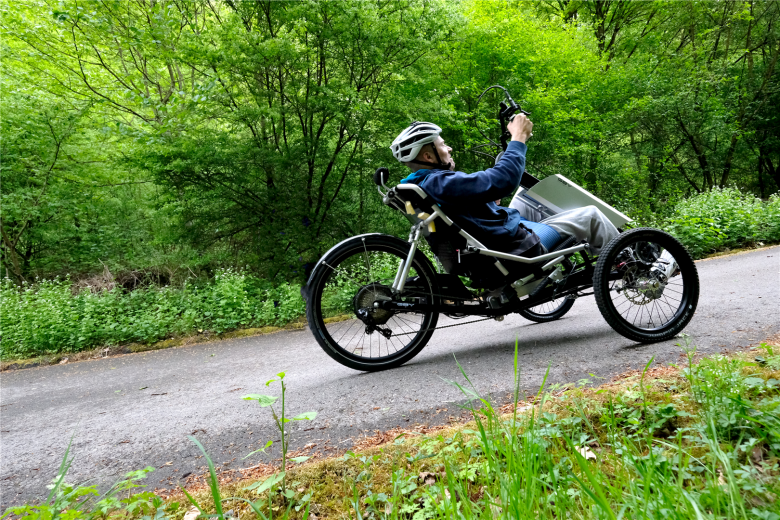Reconnecting legs to the brain thanks to neurotechnology
Paraplegics are being given new hope by Swiss researchers who have come up with a technological breakthrough that is helping people who have suffered spinal cord injuries to walk again. Thanks to neurotechnology, two Swiss scientists have re-established the connection between a person's legs and their brain for the first time.
A groundbreaking discovery
STIMO is the name of the clinical study that has helped three paraplegics to walk by themselves, aided only by crutches or a walking frame. Grégoire Courtine and Jocelyne Bloch, two Swiss scientists from the University Hospital of Lausanne and the Swiss Federal Institute of Technology in Lausanne, have been leading the research that helps people who have suffered spinal cord injuries to regain control over their leg muscles. This is done using an implant, a world first in the history of science.

"First we tested this technology on lab animals in order to determine which areas to use and how the electrical stimulation would reach those areas," explains neuroscientist Grégoire Courtine. "After more than ten years of research, we were able to establish precisely how the brain activates the spinal cord. We demonstrated for the first time how a rat with a paralysing injury can recover voluntary use of its paralysed limbs. Then we repeated the experiment on a primate. It's groundbreaking because it's never been done before. It's really about the willpower to want to walk again which makes the brain develop pathways to communicate with the injured part of the back." Thanks to the promising results from the animal experiments, the team of scientists secured the right to carry out a clinical trial for paraplegics.
Reconnection
Surgery is required to successfully reconnect the brain and the legs, which involves implanting electrodes above the spinal cord injury. "What's key is that the last six centimetres of the spinal cord are intact, because that's the part that activates the legs and it's where we implant the electrodes," explains Jocelyne Bloch, the neurosurgeon operating on the patients in the trial. "However, treatment is only possible if the patient's neuromuscular system hasn't undergone atrophy," adds Courtine. The electrodes that are implanted in the spinal region transmit an electrical stimulation that makes it possible to reconnect with the brain. The experiment has been a success. At the end of October, a sixth person suffering from paraplegia as a result of an accident – just like the other patients – also began taking part in the clinical trial.

Promising results
This method of rehabilitation is tested for six months. During the first training sessions, the patient wears a harness to support their weight. Two members of the scientific team also stay by the patient's side. As progress is made, the person becomes more and more autonomous. The sessions demand intense physical and mental effort on the part of the patient, but they are effective. The first three patients in the trial were successfully able to walk by themselves, aided only by crutches or a walking frame. "As the months went by, I was able to control my legs and choose where to put my foot, to move my legs and to have less body support, which means gradually putting more and more weight on my legs," says a delighted Sébastien Tobler, one of the participants in the clinical trial. "The ultimate goal of the project is for the patient's body to memorise the communication between the brain and the spinal cord so that it can perform this naturally, without electrical stimulation. That means that the patient can walk without using the implant in their body." Courtine and Bloch are also hopeful that their clinical trial will become a recognised method of treatment one day.





